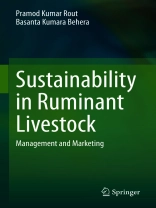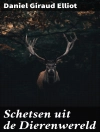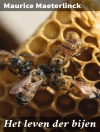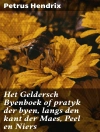This book presents a concept for implementing a mass balance approach toward developing an effective eco-friendly, livestock farming system independent of external energy input. In this context it describes a modern, integrated farming system, and includes comprehensive technical information explaining the design and evaluation of manure management systems, and modeling and operational tools.
It first discusses the mass balance operating process, highlighting the difference between imported and exported mass across the farm boundary. Estimating mass balance can provide critical information for (comprehensive) nutrient management planning and for managing the movement of nutrients and manure. It then explains the estimation of whole-farm P mass balance using a suitable model system. The subsequent chapters provide updated information on management aspects of livestock-farming and generation of multiple job opportunities, and also explore various aspects of livestock farming operational protocols like housing and management; nurture of rams, ewes and lambs, new born calves and heifers; care of buck, doe and kid- nutrition flushing; concept zero grazing-systems; disease control and management; integrated goat farming; and crop-livestock integration.
Further, the book addresses crop-livestock integration; energy autonomy in cattle farming; value added biopharmaceuticals from cattle farming; CAPEX for cattle farming; concepts of cattle farming; detrimental effects of the industry; topographic and edaphic factors, and thermal stress on livestock growth and development; socioeconomic development; and water requirements for livestock.
The book concludes with the most important issue in the field of agriculture and veterinary science: “Livestock Farming with Care, ” describing sustainable, eco-friendly livestock farming by highlighting issues like animal feed vs. human food; agricultural GDP vs livestock, and factors affecting the sustainability oflivestock farming. Given its scope, this book is a valuable resource for researchers and students alike, and will also appeal to practitioners in the field of livestock.
Inhoudsopgave
Chapter 1. Prelusion Significance of Livestock.- Chapter 2. Mass Balance concept in Livestock Farming.- Chapter 3. Goat and Sheep Farming.- Chapter 4. Cattle and Buffaloes Farming.- Chapter 5. Factors Influencing Livestock Way of Life.- Chapter 6. Sustainable Livestock Farming.- Chapter 7. Conceptual Development of Livestock Supply Chain Management.
Over de auteur
Prof. Basanta Kumara Behera is an educationist and consultant on biotechnology industry development, and is involved in transferring laboratory research to industry. He has been a Professor of Biotechnology at three distinguished Indian universities, and has regularly taught postgraduate courses on topics related to bio-energy management and biomass processing technology since 1978. In 2009 he joined an MNS company as an adviser on speciality chemical production and drug design through microbial process technology. Prof. Behera is associated with leading national and international companies as a technical adviser for the production of biopharmaceuticals. He is the coauthor of the highly acclaimed book “Goat production and marketing in tropics: A Practical Guide, ” and is the author of various other books.
Dr. Pramod K Rout is currently a Principal Scientist at CIRG, Mathura, under the Indian council of Agricultural Research, New Delhi. He graduated in Veterinary Sciences from The College of Veterinary Sciences and Animal Husbandry, Bhubaneswar, and completed his master’s and doctoral degrees at the Indian Veterinary Research Institute, Izatnagar, Bareilly. He specializes in the genetics of disease resistance. He also worked as a Post-doctoral fellow at National Institute of Immunology, New Delhi, for 2 years, and in the Genetics and Genomics Division, Roslin Institute, Edinburgh. He is a researcher in the area of genetic improvement of livestock and improving selection decision with molecular genetics application. He also coordinates the All India research project on Goat Improvement. His research focuses on the genetic diversity of livestock, conservation of animal genetic resources and management, genetics of disease resistance, genetics of heat stress regulation in livestock, and milk genomics. He has also worked in the area of conservation of endangered goats in their natural habitat. Dr. Rout is the coauthor of the highly acclaimed book““Goat production and marketing in tropics: A Practical Guide.”












